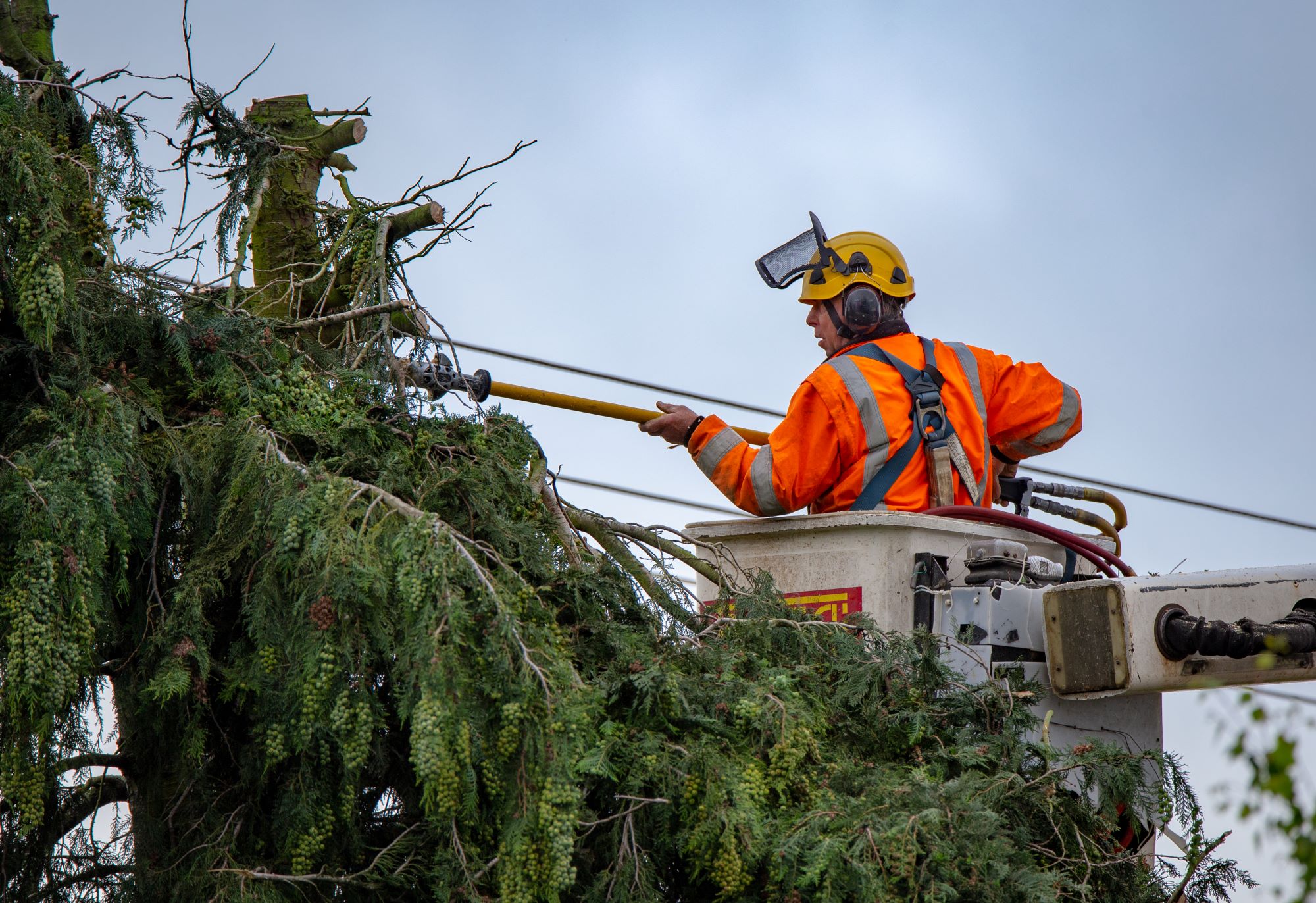Employers must ensure that non-qualified workers and their materials, equipment, and machinery remain at least 3 metres (10 feet) away from high-voltage sources.

Photo credit: istock.com/Sheryl Watson
Power lines overhead and underground pose a risk of electric shock to workers in many different industries. For example, this summer in B.C., a landscaping worker sustained an electric shock during tree-falling activities. The worker had climbed the tree to remove a large branch, and they were still holding the branch when it contacted a high-voltage power line as it fell.
In another incident, a young worker was using a telescoping wand to wash windows of an apartment building. The worker received an electric shock when the wand contacted an overhead power line. There are dozens of “close calls” in construction, trucking, manufacturing, agriculture, and others, as seen in recent incidents reported to WorkSafeBC.
Keep at least 3 metres (10 feet) away from high-voltage electricity
Electricity can flow through objects that are touching power lines. It can even move across a gap from a line to an object that is close by. To prevent the transmission of electricity, workers need to keep at least 3 metres (10 feet) away from a power line. This safe distance, known as the “limit of approach,” applies to people, machines, tools, and equipment.
Depending on the voltage of a line, workers and equipment may have to be kept even farther away. (The different limits of approach are detailed in B.C.’s Occupational Health and Safety Regulation.)
Make a plan for safety
Before any worker sets foot on a worksite where high voltage equipment and conductors are present, employers need to address the risk of high-voltage electricity. It’s essential to determine the voltage of any electrical lines at the very beginning of a project, to know which limit of approach is required.
Employers with multiple work locations must do a risk assessment for each of them. (For more information, see Assessing Risks from WorkSafeBC.)
Once the risk assessment is complete, and you have a plan for controlling the risks, you need to inform your workers of the potential electrical hazards (along with any other workplace hazards). Everyone on the crew needs to know the plan for working safely.
Everyone can contribute to safe work
“While employers are responsible for conducting a risk assessment and producing a plan for safety around high-voltage electricity, everyone has a role to play”, says Carol-Anne Boufford, WorkSafeBC manager, Prevention Field Services for the construction industry.
WorkSafeBC and BC Hydro are reaching out to developers, builders, prime contractors, and workers about the dangers of working near high voltage. BC Hydro offers two free electrical safety courses for individuals working near BC Hydro power lines. And WorkSafeBC has published key information about working in proximity to high voltage conductors.


